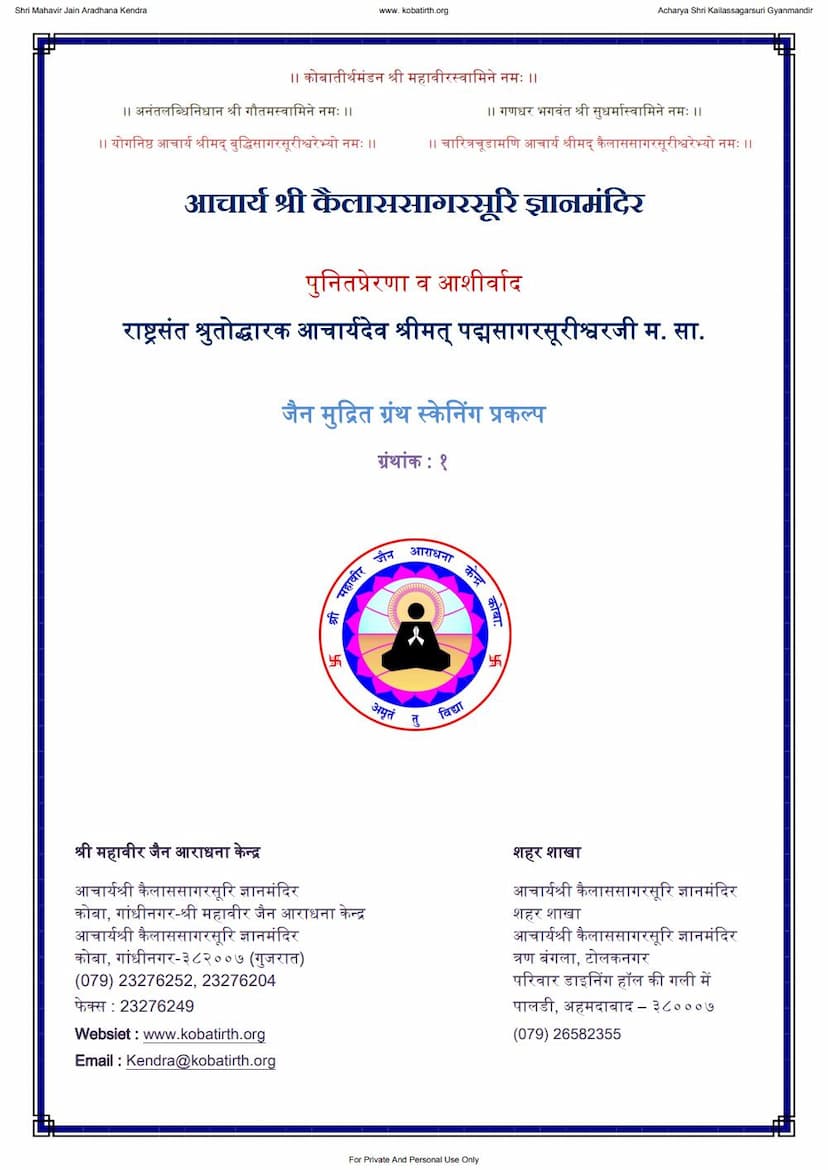Chaitanya Chandrodaya
Added to library: September 1, 2025

Summary
The provided text is an excerpt from the "Chaitanya-Chandrodaya" or "The Incarnation of Chaitanya," a drama in ten acts by Kavikarnapura. The text is a scanned copy of a book published in 1854 by J. Thomas at the Baptist Mission Press in Calcutta, edited by Rajendralal Mittra, with a commentary by Vishvanath Shastri on the Prakrit passages.
The excerpt focuses on the introduction to the drama, providing context about the historical and religious milieu in which Chaitanya Mahaprabhu, the central figure of the play, emerged. Here's a summary of the key points from the introduction:
- Chaitanya as a Reformer: The introduction draws a parallel between Chaitanya's mission in Bengal to revive the "theosophy of the Bhagavat" and Luther's reformation of Christianity in Europe. Both aimed to cleanse their respective religions of perceived corruptions and emphasized devotion (Bhakti).
- The Doctrine of Bhaktimarga: This system, originating from an ardent and enthusiastic temperament seeking deeper understanding of the divine, is characterized by:
- Yearning for communion with a beneficent creator through ardent love.
- Optimism and independence from strict canonical law.
- Profound veneration for the spiritual teacher (Guru).
- Rejection of caste distinctions.
- Disengagement from temporal concerns.
- Despising fasts and penances while living in privation.
- Use of allegories, love songs, and ghazals in writings.
- Preference for concerts and devotional singing/dancing.
- Fainting in ecstatic devotion.
- Comparison with Sufism: The introduction extensively compares Bhaktimarga with Sufism, highlighting similarities such as the yearning for divine communion, devotion to a spiritual guide, disregard for caste, detachment from worldly affairs, and ecstatic experiences. It notes differences in the stages of spiritual progression, particularly regarding the concept of union with the divine (absorption vs. fellowship).
- Origins and Development of Bhakti: The introduction traces the origins of Bhakti from the Bhagavad Gita and Sri Bhagavatam, noting its initial limited impact on established Hinduism. It mentions Jayadeva's poetic works and Chaitanya's role in establishing Bhakti as a practical religion.
- Kavikarnapura and the Drama:
- Kavikarnapura is identified as the author of "Chaitanya Chandrodaya."
- The drama is a historical play in ten acts, first performed at the Jagannatha festival.
- It imitates the style and plot of "Probodha Chandrodaya."
- The subject matter is drawn from Rupa Goswami's "Karcha," detailing Chaitanya's life.
- The introduction critiques the play for its dialogues, lack of unity of action, and ornate style, suggesting it might not be ideal for theatrical performance but holds literary and historical value as a portrayal of Chaitanya and his followers.
- Dramatis Personae: A list of characters is provided, including Chaitanya, his disciples (Adwaita, Sanatana, Rupa, etc.), historical figures like Hossein Shah and Prataparudra, and allegorical figures like Káli (Immorality) and Adharma (Vice).
- Synopsis of the Drama's Content (Act by Act): The introduction outlines the plot of each of the ten acts, detailing Chaitanya's life from birth to his asceticism, his teachings, miracles, encounters with opponents, travels, and eventual reunion with disciples. It highlights Chaitanya's efforts to break caste barriers and his inclusivity towards Muslims.
- Chaitanya's Philosophy: The introduction explains Chaitanya's core teachings, emphasizing the superiority of devotion (Bhaktiyoga) through chanting the Lord's name over mere knowledge for salvation. It clarifies that salvation in Chaitanya's system is a state of fellowship with the Deity, not absorption.
- Chaitanya's Influence: The introduction notes the significant success of Chaitanya's movement, resulting in millions of converts and establishing a new era in Sanskrit literature through the works of his disciples.
In essence, the introduction serves as a comprehensive preamble to the play, situating Chaitanya within a broader spiritual and reformist movement, comparing his devotional path to other mystical traditions like Sufism, and providing a detailed overview of the drama's plot and characters.